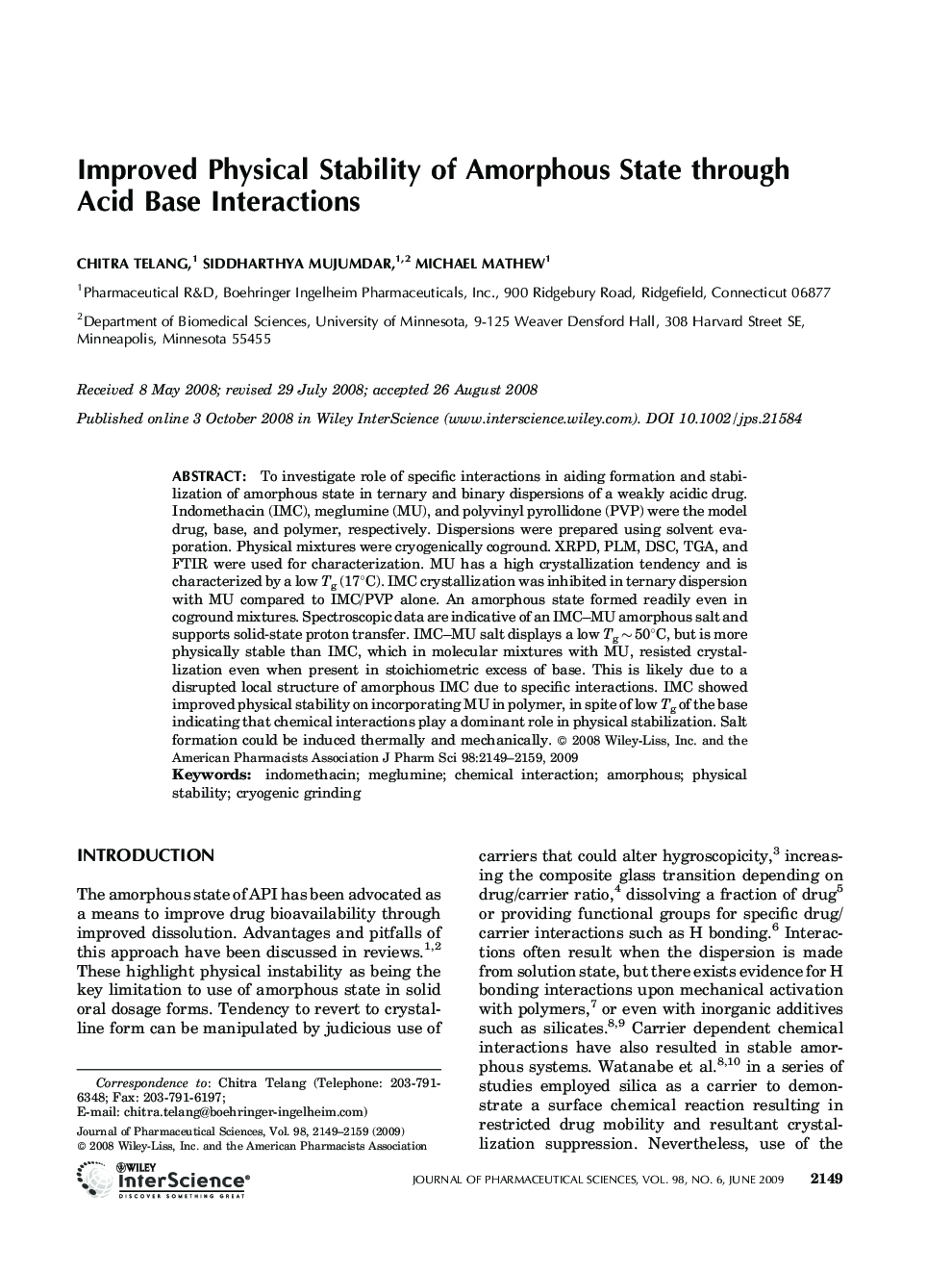| Article ID | Journal | Published Year | Pages | File Type |
|---|---|---|---|---|
| 2485211 | Journal of Pharmaceutical Sciences | 2009 | 11 Pages |
Abstract
To investigate role of specific interactions in aiding formation and stabilization of amorphous state in ternary and binary dispersions of a weakly acidic drug. Indomethacin (IMC), meglumine (MU), and polyvinyl pyrollidone (PVP) were the model drug, base, and polymer, respectively. Dispersions were prepared using solvent evaporation. Physical mixtures were cryogenically coground. XRPD, PLM, DSC, TGA, and FTIR were used for characterization. MU has a high crystallization tendency and is characterized by a low Tg (17°C). IMC crystallization was inhibited in ternary dispersion with MU compared to IMC/PVP alone. An amorphous state formed readily even in coground mixtures. Spectroscopic data are indicative of an IMC-MU amorphous salt and supports solid-state proton transfer. IMC-MU salt displays a low Tg â¼Â 50°C, but is more physically stable than IMC, which in molecular mixtures with MU, resisted crystallization even when present in stoichiometric excess of base. This is likely due to a disrupted local structure of amorphous IMC due to specific interactions. IMC showed improved physical stability on incorporating MU in polymer, in spite of low Tg of the base indicating that chemical interactions play a dominant role in physical stabilization. Salt formation could be induced thermally and mechanically. © 2008 Wiley-Liss, Inc. and the American Pharmacists Association J Pharm Sci 98:2149-2159, 2009
Related Topics
Health Sciences
Pharmacology, Toxicology and Pharmaceutical Science
Drug Discovery
Authors
Chitra Telang, Siddharthya Mujumdar, Michael Mathew,
